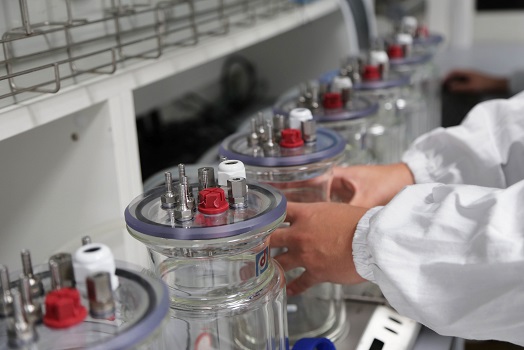Pinsa Romana: the most digestible is with biga and sourdough starter

It is also depopulating outside its areas of origin. It is the Pinsa Romana, a kind of pizza with a characteristic elongated shape, prepared with a mixture of different types of flour and characterized by a long leavening process. A study by the University of Bolzano's food microbiology laboratory, Micro4Food, has studied and defined what conditions improve its digestibility.
Which Pinsa is the best nutritionally and the most digestible? The one that uses a combination of biga and sourdough for leavening. This is stated in a scientific article published in the journal Nutrients and the result of research conducted in Micro4Food, the Food Microbiology Laboratory of the University of Bolzano: "Sourdough "Biga" Fermentation Improves the Digestibility of Pizza Pinsa Romana: An Investigation through a Simulated Static In Vitro Model."
Pinsa Romana is a kind of elongated pizza created from a dough made with various types of flour (wheat, soy and rice), olive oil, yeast (brewer's or sourdough), salt and lots of water. Normally being a dough of different types of flours, Pinsa is more digestible than traditional pizza made only with wheat flour. Its nutritional profile is more complete because soy flour has a higher protein content than the wheat flour dough from which classic pizza is made and contains lower amounts of gluten. But there is Pinsa and Pinsa, and leavening agents and rising times make the difference. Finding the right combination is done by science.
Research. The type of yeast matters
In the field of sourdough research, the Micro4Food Food Microbiology Laboratory (directed by Prof. Raffaella Di Cagno and Prof. Marco Gobbetti in the NOI technology park in South Bolzano) is a national and international reference point. For this reason, it was chosen by Fourneo, a French company producing leavened bakery products, so that researchers from the University of Bolzano could investigate which type of leavening gives rise to the most nutritionally complete Pinsa and is at the same time the most digestible: a research already done for other types of doughs but not this type of product: a still unexplored product and a recent rediscovery in the market.

The research authors studied how different types of fermentation, with the same dough composition, affect the nutritional properties of the product, on the one hand, and its digestibility, on the other. For the latter aspect, Micro4Food researchers used the SHIME, an instrument that faithfully reproduces on a laboratory scale the human intestinal tract and of which there are few specimens in Italy, which allowed them to simulate the various stages of digestion of pinse made with the different fermentations evaluated.
"We compared Pinse Romane prepared with brewer's yeast and with biga and sourdough," says researcher Andrea Polo, one of the study's authors. - The use of biga showed an improvement in the flavor, texture and durability of the Pinsa compared to the fermentation method with brewer's yeast alone." The winner among the six combinations tested turned out to be the one with 48 hours of leavening and use of biga and sourdough, even compared to longer leavening but with brewer's yeast, normally used in baking processes.
What is the reason for the first place on the podium of the best Pinsa? The sports metaphor used by Polo helps to immediately understand the advantages of leavening with sourdough versus leavening with simple brewer's yeast. In the former, many more highly efficient players (microorganisms precisely) come into action. "In brewer's yeast, to use a sports metaphor, it's as if we have only one good player," Polo explains, "with sourdough, on the other hand, it's a team, and a pretty tight team at that. In sourdough, several enzymes of microbial origin come into action that better digest the proteins in the flour and make the dough more digestible, of course." We are in the presence of a complementary action.
Pinsa Romana made with biga, including sourdough, and fermented for 48 hours at 16°C had the lowest glycemic index, the highest content of total peptides, total and individual free amino acids, and gamma-aminobutyric acid (GABA, molecules important for the regulation of the nervous system), and the best protein quality indices (ratio of protein efficiency to nutritional index). In addition, the inclusion of sourdough in the biga improved the bioavailability of protein-related end products, including compounds that promote human health, such as essential amino acids.

 Italiano
Italiano









